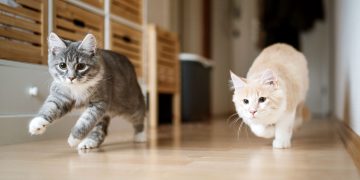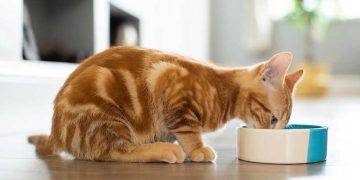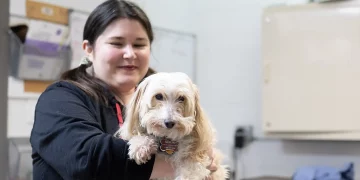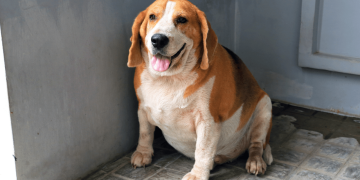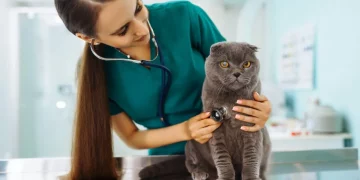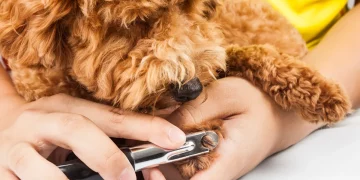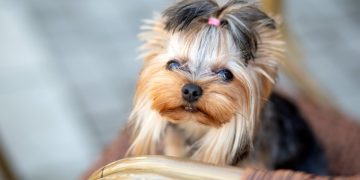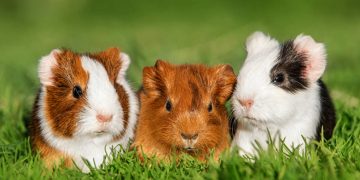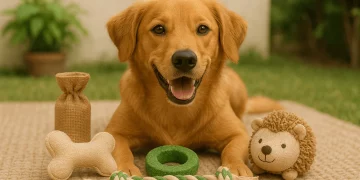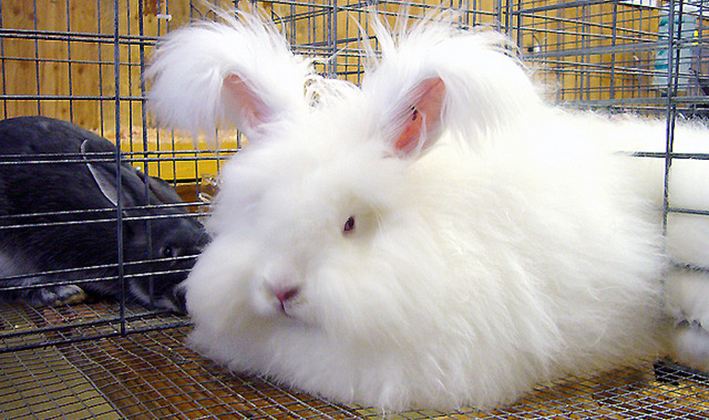Angora rabbits are a unique and adorable breed, known for their luxurious, long fur that has made them prized for centuries. These rabbits are not only beautiful but also require specific care due to their dense coats. Whether you are considering adopting an Angora rabbit or already own one, understanding their unique needs is crucial to keeping them healthy and happy. This guide will provide in-depth information on all aspects of Angora rabbit care—from grooming and feeding to health issues and training.
1. Introduction: What Makes Angora Rabbits Special?
1.1. Origins and History of Angora Rabbits
Angora rabbits originated in Turkey and have been bred for centuries primarily for their long, soft wool. The name “Angora” comes from the ancient city of Ankara (formerly Angora) in Turkey. Over time, they became highly prized by aristocrats for their wool, which was used in the creation of fine textiles.
- Angora Wool: Known for its silky texture and warmth, Angora wool became so valuable that it played an important role in the fashion industry.
- Different Varieties of Angora Rabbits: There are several types of Angora rabbits, such as the English Angora, French Angora, Giant Angora, and Satin Angora. Each type has slight differences in coat texture and grooming needs, but all share the characteristic long, soft fur.
1.2. Why Choose an Angora Rabbit as a Pet?
Angora rabbits are unique pets due to their calm, docile nature and their striking appearance. Their long fur gives them an exotic and elegant look, which many people find charming. However, prospective owners should be aware that owning an Angora rabbit requires a significant amount of time, effort, and knowledge about grooming and health care.
2. Understanding the Angora Rabbit’s Physical Characteristics
2.1. Coat and Fur
Angora rabbits are famous for their long, thick fur, which grows continuously. This fur needs to be properly managed to prevent matting and tangles.
- Types of Coats:
- English Angora: This variety has the longest, softest fur, requiring daily grooming.
- French Angora: Slightly shorter, more manageable fur, though still needs regular grooming.
- Giant Angora: Larger breed with thick fur that needs frequent grooming.
- Satin Angora: Known for its silky, glossy coat that requires a bit more attention to prevent tangles.
2.2. Size and Weight
Angora rabbits vary in size depending on the breed. On average:
- English Angora: Weighs between 3.5 and 5 pounds.
- French Angora: Weighs between 7 and 10 pounds.
- Giant Angora: Can weigh between 9 and 12 pounds.
- Satin Angora: Typically around 6-9 pounds.
2.3. Life Expectancy and Health
Angora rabbits can live for 7 to 12 years, depending on their health and how well they are cared for. Their lifespan can be affected by genetics, diet, exercise, and grooming routines. Like all rabbits, they are prone to certain health conditions, especially related to their digestive and respiratory systems.
3. Grooming Your Angora Rabbit: The Key to Their Care
3.1. Importance of Grooming
Grooming is one of the most important aspects of caring for an Angora rabbit. Their coats require daily attention to prevent matting, tangling, and hairballs, which can lead to serious health problems like gastrointestinal issues.
- Preventing Matting: The longer the fur, the more prone it is to matting. Regular brushing is essential to prevent this.
- Shedding: Angora rabbits shed seasonally, and when they do, their fur comes out in clumps. Managing this is crucial for maintaining a clean and healthy coat.
3.2. Tools for Grooming
There are several grooming tools you’ll need to effectively manage your Angora rabbit’s coat:
- Fur Comb: A comb specifically designed for long-haired rabbits to detangle and remove loose hair.
- Wire Slicker Brush: Helps remove tangles and mats without damaging the fur.
- Undercoat Rake: Useful for removing undercoat fur that can cause matting.
- Shears or Clippers: Used for trimming hair in delicate areas or if the fur becomes too long and unruly.
- Gloves: To handle your rabbit gently during grooming.
3.3. Grooming Routine
- Brushing Frequency: English Angoras require daily grooming, while French Angoras may only need brushing every 2-3 days. Giant Angoras require grooming every other day, and Satin Angoras require regular brushing but with slightly less frequency.
- Bathing: Unlike other pets, rabbits do not need regular baths. Bathing can stress your rabbit, and their fur can take a long time to dry. Instead, focus on regular brushing.
- Cleaning Ears and Eyes: Angora rabbits, especially those with long fur around their eyes and ears, need occasional ear and eye cleaning. Regularly check for signs of dirt or infection.
3.4. Dealing with Excessive Shedding
During shedding season (typically in spring and fall), Angora rabbits will shed more fur than usual. You will need to help them manage this by increasing grooming sessions. Additionally, providing your rabbit with plenty of fiber-rich hay will help them digest the excess fur that they may swallow.
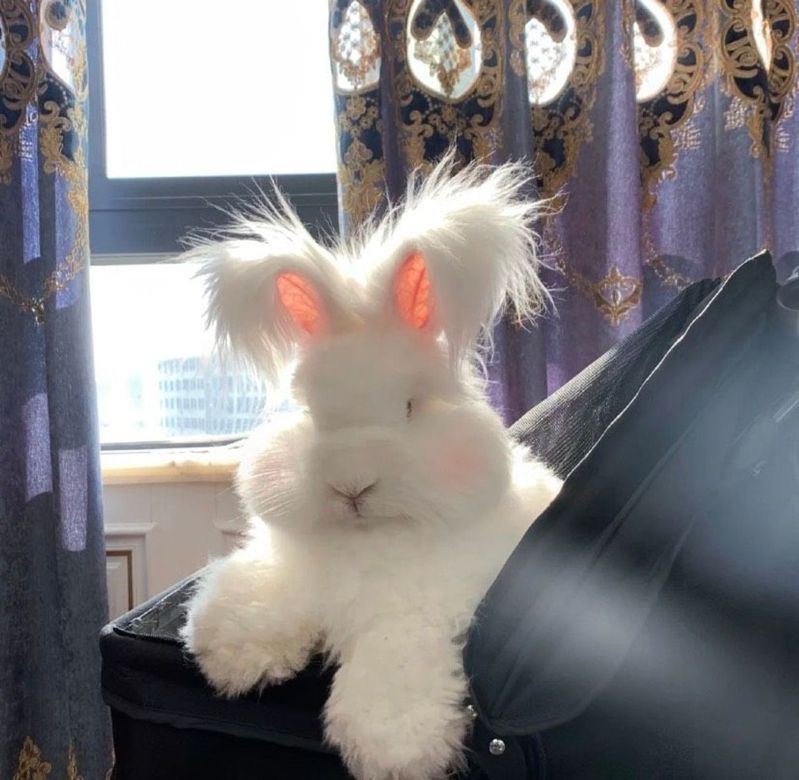
4. Nutrition and Feeding Your Angora Rabbit
4.1. Basic Diet for Angora Rabbits
A balanced diet is essential to maintaining a healthy rabbit, and it is especially important for Angora rabbits due to their grooming needs. A proper diet helps maintain a healthy coat and prevents digestive issues.
- Hay: The primary component of any rabbit’s diet. Provide unlimited fresh hay, such as timothy hay, which is high in fiber and aids in digestion.
- Pellets: High-quality rabbit pellets provide additional vitamins and minerals. Be careful not to overfeed pellets, as they can lead to obesity.
- Fresh Vegetables: Offer fresh leafy greens such as kale, spinach, and dandelion greens. Avoid iceberg lettuce as it can cause digestive issues.
- Water: Always provide fresh, clean water.
4.2. Special Considerations for Angora Rabbits
Because of their dense fur, Angora rabbits tend to eat more fiber to help manage hair digestion and prevent hairballs. Additionally, their diet should be high in roughage to aid in their digestive process, as they are prone to gastrointestinal issues like GI stasis.
- Avoiding Hairballs: Make sure your rabbit has access to fresh, fiber-rich hay at all times. Hairballs can form when they ingest too much fur, leading to blockage.
- Supplements: Consult your vet about fiber supplements or enzymes that can help with digestion.
5. Health Care for Angora Rabbits
5.1. Common Health Issues
Angora rabbits, like all rabbits, are prone to certain health conditions. Regular veterinary care and preventive measures are essential to maintaining your rabbit’s health.
- Dental Problems: Rabbits’ teeth grow continuously, so it’s essential to provide chew toys and hay to help wear down their teeth. Dental problems can lead to severe pain and digestive issues.
- Digestive Issues: Angora rabbits are particularly susceptible to GI stasis and hairballs. A healthy diet, regular grooming, and plenty of fiber can help prevent these problems.
- Respiratory Problems: Rabbits are prone to respiratory issues, especially if they live in damp or dirty environments. Make sure their living area is clean and well-ventilated.
5.2. Veterinary Care
Angora rabbits should be taken to a rabbit-savvy vet for regular check-ups. They may need routine vaccinations, parasite prevention, and dental checks. If you notice any signs of illness (such as changes in eating habits, lethargy, or diarrhea), seek veterinary attention immediately.
- Vaccinations: Depending on where you live, your Angora rabbit may need vaccinations for diseases like rabbit hemorrhagic disease (RHD) or myxomatosis.
- Parasite Control: Regular flea and mite prevention is important, as Angora rabbits are prone to external parasites due to their dense coats.
6. Housing and Environment for Angora Rabbits
6.1. Creating a Safe and Comfortable Living Space
Angora rabbits need ample space to hop around and exercise. A hutch or indoor pen that allows them room to move freely is important.
- Indoor vs. Outdoor: It’s generally recommended to keep Angora rabbits indoors to protect them from predators and extreme weather. Ensure that their living area is safe, secure, and free of drafts.
- Litter Box Training: Most Angora rabbits can be litter-trained, making them easier to care for. Use rabbit-safe litter (avoid clumping cat litter) and place the box in a quiet corner.
6.2. Enrichment and Exercise
Like all rabbits, Angora rabbits need plenty of stimulation to stay mentally and physically healthy. This can include toys, tunnels, and regular playtime outside of their living space.
- Toys: Provide chew toys, tunnels, and balls to encourage play. They also enjoy items like cardboard boxes and paper bags to hide in and explore.
- Supervised Outdoor Time: If possible, let your Angora rabbit hop around in a secure, safe area outside. This can be a great way for them to exercise and explore.
7. Behavioral Training and Bonding with Your Angora Rabbit
7.1. Socializing Your Angora Rabbit
Angora rabbits are generally friendly, gentle, and enjoy human interaction. They can be socialized from a young age to be comfortable around people, children, and even other pets.
- Handling: Begin gently handling your rabbit early on to get them accustomed to being touched. Make sure to support their body properly, especially because of their long fur.
- Building Trust: Spend time with your rabbit daily, speaking softly and offering treats to build trust and establish a bond.
7.2. Litter Box Training
Most Angora rabbits are easy to litter train, as they instinctively choose one spot for elimination. You can train them by placing a litter box in the area they frequent.
8. Conclusion: Is an Angora Rabbit the Right Pet for You?
Angora rabbits are beautiful, intelligent, and loving pets, but they do require significant care, especially when it comes to grooming. If you’re prepared for the time and effort it takes to properly care for them, they can make wonderful companions. Understanding their dietary, grooming, and health needs is crucial to ensuring they live a long, happy life as part of your family.
By providing your Angora rabbit with a safe, enriched environment and a healthy diet, you’ll be able to enjoy many years of companionship with your fluffy friend.






